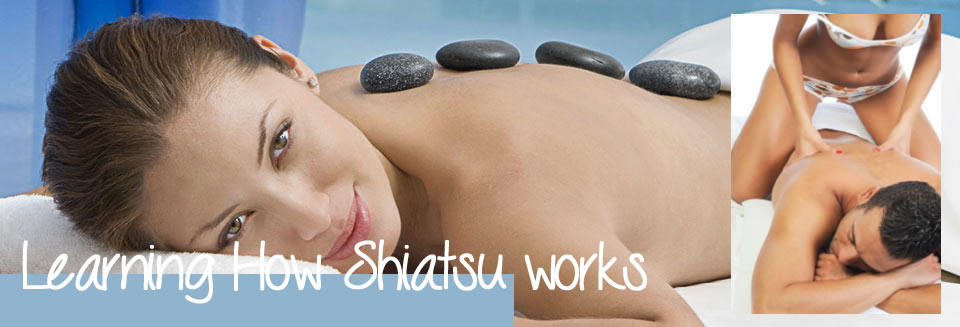yoga & health magazine
Learning How Shiatsu works
Bring in the new year - Yoga & health magazine's Introduction to shiatsu contains very important pointers that will help you learn the art of Shiatsu effectively; it also presents some important 'do's and don'ts' to consider when giving a Shiatsu treatment.
See commonly asked questions about Yoga
Therefore it is strongly recommended that you read it carefully before proceeding to Part One.
- Yin and Yang
- THE ABDOMEN TREATMENT
- Leg Pressure Points
- Preparing for a Shiatsu Session
- The Five Elements
- Shoulder pressure points
- THE STEP-BY-STEP SEQUENCE
- RESOURCES
- The origins of Shiatsu
- Techniques
- How to find the points
- POINTS TO REMEMBER
- How much pressure to use
- SELF-SHIATSU
- Choosing a school or practitioner
- SELF-TREATMENT
- Shoulders Treatment
- Vital organs
- Energy channels
- TREATING THE INDIVIDUAL
- DEVELOPING YOUR TECHNIQUE
- Energy in the hands
- Hara and breathing
- SELF-DEVELOPMENT EXERCISES
- Back of body treatment
- Front of leg pressure points
- Toe Treatment
- Tsubos
- Kyo and Jitsu
- Increasing your sensitivity
- Governing Vessel
- Forehead Massage

DEVELOPING YOUR TECHNIQUE
When you have practised the treatment sequence in Part One a number of times, you will find that you can follow it using only the illustrations. Once you are very familiar with the whole sequence, and are effectively incorporating the guiding principles of Shiatsu into your way of working, without thinking too much about them, you should find that the people you give Shiatsu to are receiving definite benefit from it. If so, then you are ready to develop your technique further.
There are four basic ways in which you can take your technique to a more advanced level: by developing your own internal energy awareness with breathing and visualization exercises; by improving your sensitivity to Ki flow in the body of the recipient; through studying the way Ki operates in the body, such as learning the paths of the channels, and the Chinese Five Element system; and by adapting the techniques that you have learnt to different individuals, and to treat specific health conditions.
You will probably find it best to take the material a little at a time, becoming familiar with it and weaving newly-developed skills into regular practice, rather than trying to take it all in at once. Once you are familiar with the more advanced techniques you may wish to pursue a more specialized branch of Shiatsu technique; this is best done by attending classes. Guidance on finding and choosing classes is given at the end of the section.
More advanced work can include adaptation or modification of the basic treatment to suit individual requirements or circumstances.
Prices and Tuition
£50 for "First Session" Pilates or Pilates/Yoga or Yoga session, 1 1/2 -2 hours (where a consultation is involved). The first Pilates only or mixed Pilates/Yoga session is £50 for 1 1/2 - 2 hours. £30 for 1 hour £45 for 1 1/2 hours (Minimum rate is £45 for 1 1/2 - 2 hours unless it's a regular £30 1 hour session. ) £60 for 2 hours Other options are available, contact us if for other options. One-to-one rate/small group rates (2-4 clients, rate is the total payment, irrespective of number of participants.) Price reductions are negotiable for regular sessions.
